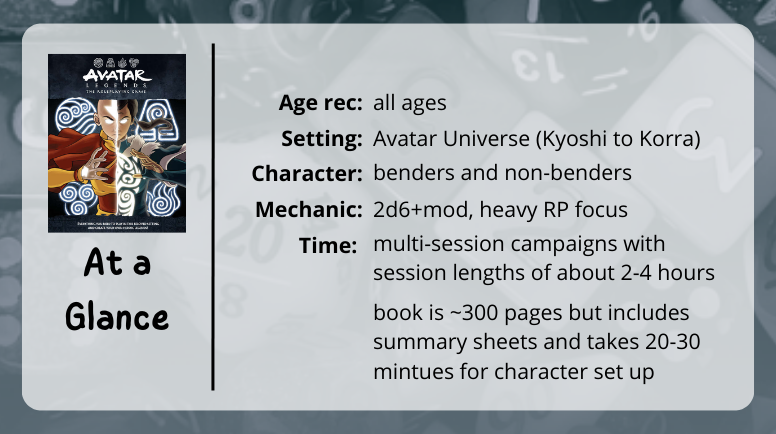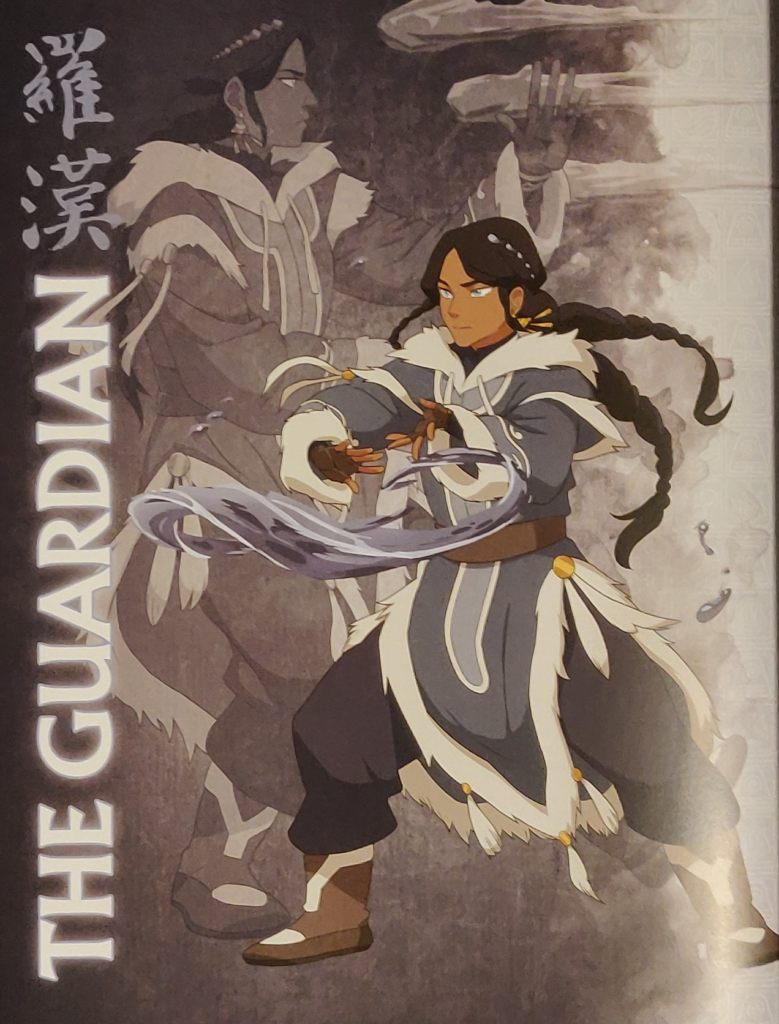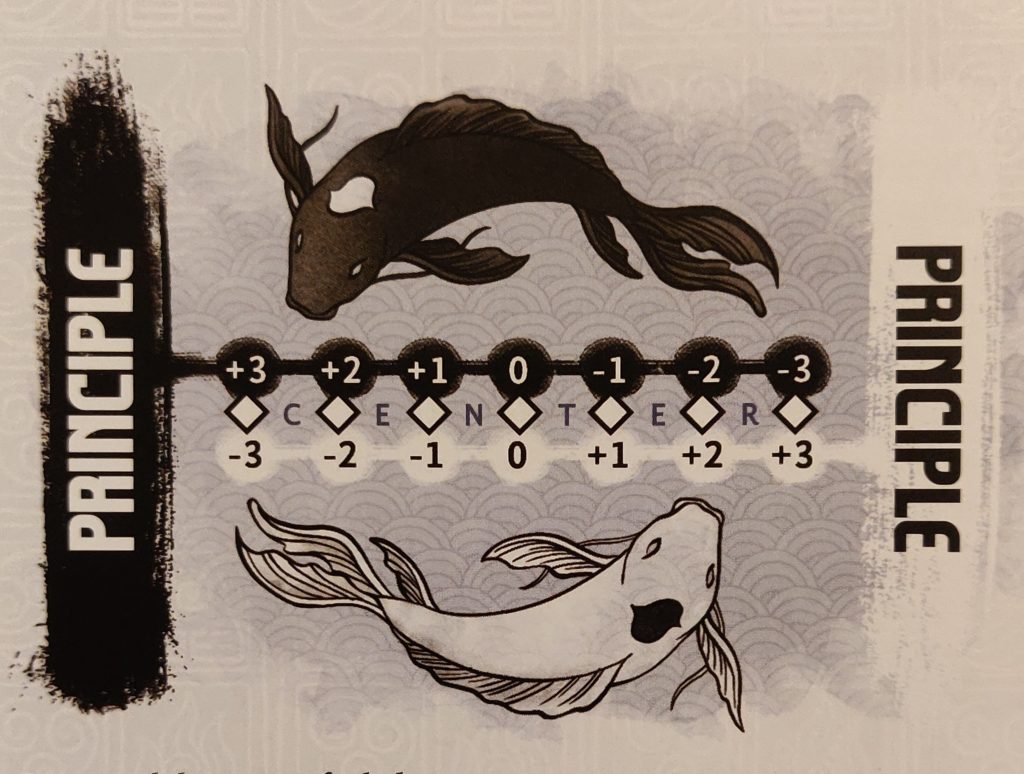Review of Avatar Legends by Magpie Games
Note: This post may contain affiliate links. At no additional cost to you, I may earn a small commission from purchases made using them. TTRPGkids uses this to keep the site going. Read full disclosure here.
Jump to:

Avatar Legends is made for all-ages
Avatar Legends is rated for everyone and gives plenty of flexibility so your stories and adventures can align with what’s right for all players.
Lore from the Avatar Universe can touch on difficult conflicts, but the book includes a thorough explanation of safety tools and sets up baseline truths for any game played in this system. There are a wide range of challenges to choose from, and they span five different eras from the Kyoshi Era to the Korra Era so that you can adjust the setting and tone to your players’ needs. It also requires that player characters are friendly, join the adventure willingly, and are not villains – this creates initial boundaries that help maintain the intention of the game and keep it accessible to all players.
The system itself requires some reading and tracking in character playbooks and for the rules (at least the front/back moves summary sheet) plus some minor math (2d6+modifier) to play, but younger players can also be easily helped by older players or the game facilitator who has read the whole book while younger players are still learning.
Avatar Legends is set in the Avatar Universe

Avatar Legends takes place in the Avatar Universe and covers timeframes and challenges that fans of the world have seen in the Avatar TV shows and graphic novels. You can choose from the Kyoshi Era, Roku Era, Hundred Year War, Aang Era, and Korra Era for your story, and the book fills in all the lore that you need.
There are approximately 70 pages of setting details ranging from key locations, events, conflicts, NPCs, and more to provide or add to your knowledge of all the different settings covered in the game. This info is true to the existing media in the Avatar Universe and builds on it greatly. Events like The Fall of the Fifth Nation in the Kyoshi Era or The Southern Reconstruction Project in the Aang Era happen outside of some of the well known media but are detailed in the book and explain the impact that these events have in the world.
Building from an established setting and having it feel unique and new so that players want to pursue paths besides just replaying what’s in the show is a challenge, and Magpie Games met that challenge. As a longtime fan of the Avatar Universe, I was very glad to have more lore and events and am excited thinking out how these new open-ended hooks would resolve themselves… and how existing events would affect the world if resolved differently.
Your character in Avatar Legends
Your character in Avatar Legends can be a bender in any one of the four elements or a non-bender who uses weapons or tech to make moves. You’ll pick an era, along with your group so that it’s consistent, to help establish some of your character’s vibe (i.e. you wouldn’t want to have a technologist from the Korra Era in the Roku Era for thematic reasons) and use the playbooks provided in the game to figure out their stats, moves, and so on.

Actual character creation from the playbooks was straightforward – once I’d read through them all (there are 10), it took a few minutes to pick the one that I wanted (The Guardian) and then maybe 15-20 minutes to answer backstory questions, pick my demeanor option, choose my moves from the playbook list, and detail my playbook’s special story element. Starting stats are pre-determined for each playbook, so it was all very focused on the “who” of my character instead of spec’ing their numbers.
I mentioned that there was a special story element in the playbook, and I want to get into that a little bit here because I particularly enjoyed this part. In each playbook, there’s a special section that asks for a unique backstory element for that character. So, for my Guardian, it was focused on defining a particular person that my character wanted to protect and then had special conditions and moves because of that. For the Rogue playbook though, this section was about their bad habits and has a very different set of rules for what to do if you indulge in those bad habits on your own… or loop a friend into it. This was a really cool way to make each playbook unique without having to create a ton of extra overall book rules to read through, and it’s a great way to build in RP elements, especially for players who may be experiencing TTRPGs for the first time through Avatar Legends.
Mechanics in Avatar Legends
As a note: Avatar Legends has much more to the mechanics than what is listed here, but due to the scope of the book and mechanics, I will focusing on a couple main elements.
Making Moves
When you want your character to do something in Avatar Legends, you’ll make a move by rolling 2d6 and adding any modifiers from your stats, conditions, help, etc. Once you have your number, you’ll compare it to a target and see if it’s a success or failure and if it has any special consequences for that particular move (like incurring fatigue).
You have four stats for the game that start with a +1, 0, or -1 modifier, which you can adjust as you grow, and you can also incur conditions, like “angry” or “insecure” that give an additional modifier. Modifiers stay in the low single digits and are pretty easy to add up; with kiddo (5yo), we were able to do it mostly with finger counting and it worked great.
With regards to the variety of moves, you have basic moves that are available to everyone (like helping or tricking), moves related to your specific training (like water bending or using technology), and moves from your particular playbook archetype (like “stand and fight!” or “wait and listen”). The unique combination of the available moves for each character gives everyone their own special way to handle the environment, challenges, and combat while generally following the same 2d6+MOD mechanic.
Staying Balanced
One mechanic that I specifically want to focus on is Balance and how it builds in RP.
Each character has a Balance tracker that shows two, often but not always, conflicting principles that your playbook archetype is working between. Some examples are forgiveness vs. action and friendship vs. survival. They’re both principles that are important to the character, and staying between them is really important.

The Balance points for your character shift from one end of a scale to the other based on your choices or pressure from NPCs and events, and, if it gets too far on one end of the scale, your character can lose their Balance. When this happens, they may lash out, run away from a fight, or spiral until they can get back in Balance. For example, in Avatar the Last Airbender, one of Zukko’s main turning points involved him getting out of Balance but resolving it (with help and through great personal growth)… and what happened with Azula would be her getting out of Balance and not resolving it.
I love this mechanic SO MUCH. It facilitates RP so players who are new to TTRPGs have a guide for how they can frame a character’s choices, it helps maintain some of the core elements of play (like players are not villains) by giving a clear impact to choices, and it is very in line with the main themes of all media surrounding the Avatar Universe.
Overall thoughts on Avatar Legends
There is so much more that I could detail about this game from how it incorporates special bending (like lava or lightning bending), the premade adventure, the section on running a game, and tons more that are all amazing parts of this whole experience that I can’t all fit into this review. What I have above just scratches the surface of how wonderful it was to read through this, pick up new lore, and have the tools for creating group stories about a universe that I’ve been following for almost 20 years now. The mechanics facilitate the story and build RP into every element, the characters are focused on who they are and where their story will go, and the lore development is absolutely magical. Avatar Legends is a great gateway game into TTRPGs and a perfect game for anyone who is a fan of the Avatar Universe. I am very glad I had the opportunity to check it out, and I hope you get the chance to try it too!
Find a copy of Avatar Legends
You can find a copy of Avatar Legends on DriveThruRPG or through the Magpie Games website!

If you liked this post, make sure to subscribe to the TTRPGkids monthly newsletter to stay up to date on the latest reviews, tips and tricks, game and podcast list updates, and more! Thank you for playing tabletop RPGs with your kids and sharing this awesome hobby with the next generation!

